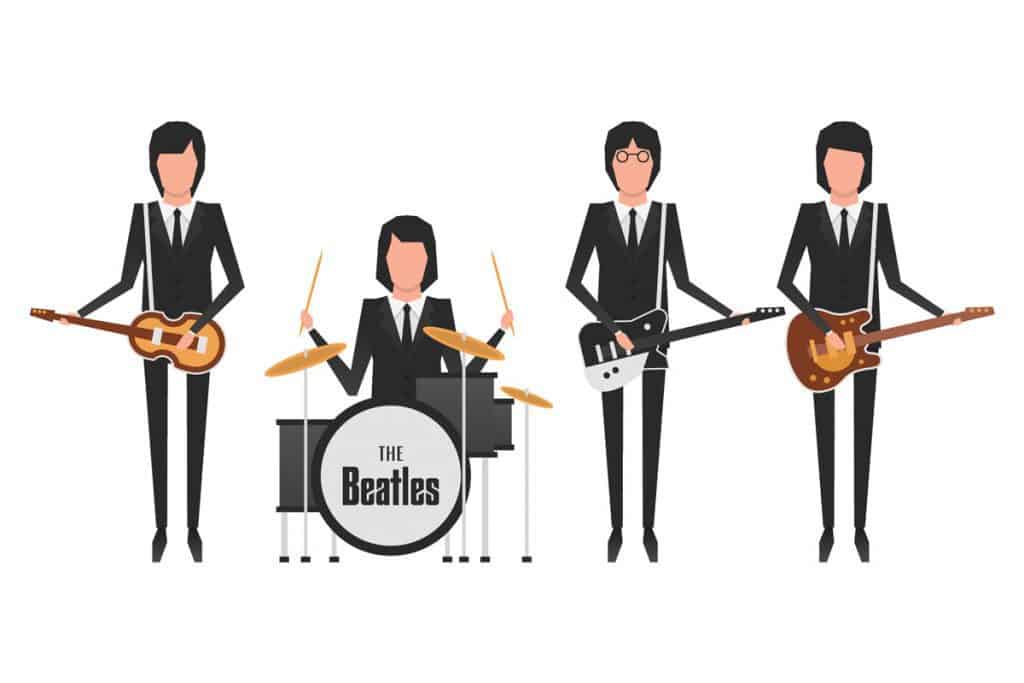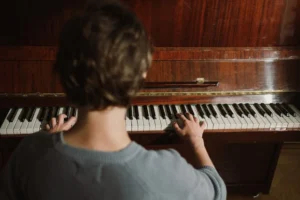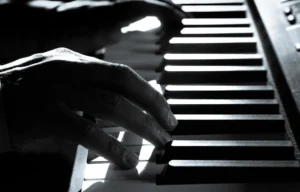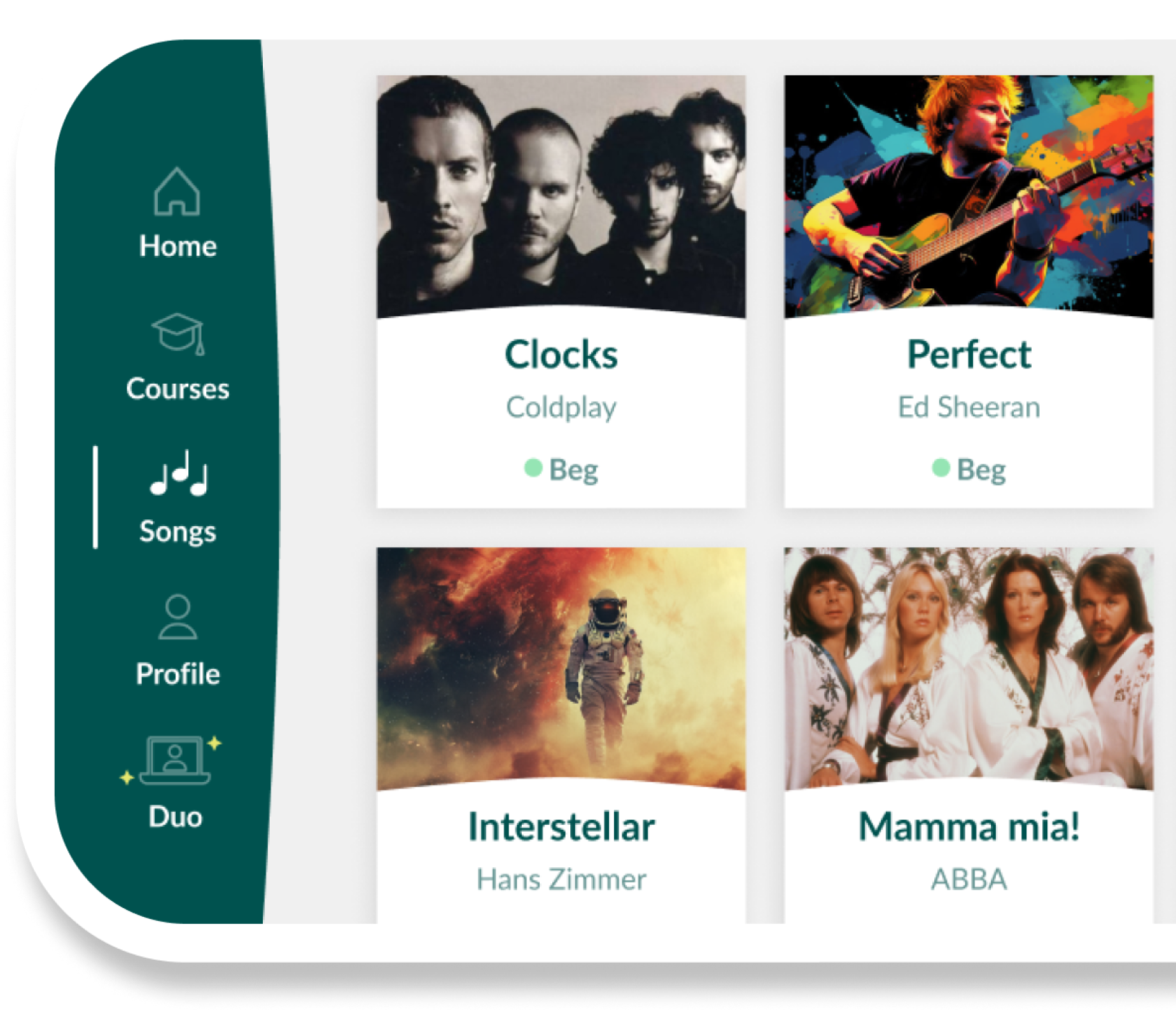If you’ve ever wondered what are the best Beatles songs to start with, or if you’re searching for the best Beatles piano songs to add to your playlist, this list has something for everyone, whether you’re a lifelong fan or just beginning to explore their magic.
Let’s dive into the best Beatles songs that everyone should listen to…
Hey Jude
If we’re talking about the best Beatles piano songs, “Hey Jude” absolutely belongs at the top. Written by Paul McCartney to comfort John Lennon’s son, this song starts as a soft piano ballad and grows into a powerful anthem of hope. With its famous sing-along ending, “Hey Jude” is one of the Beatles’ best songs of all time and a live concert favorite.
Let It Be
Another masterpiece on piano, “Let It Be” is one of the best Beatles songs that carries a simple but beautiful message sometimes, you just have to let things be. Paul’s calm vocals over gentle piano chords make this song feel like a comforting friend when life gets hard. It was one of the last songs the band released, making it even more emotional for fans.
Yesterday
“Yesterday” is one of the best Beatles songs if you’re into emotional, simple melodies. Paul McCartney sings about lost love with only an acoustic guitar and a soft string section behind him. It’s also one of the most covered songs in history, which says a lot about how deeply it connects with people.
I Want to Hold Your Hand
You can’t talk about the best Beatles songs without mentioning the one that started it all in America. “I Want to Hold Your Hand” is pure energy, joy, and classic early Beatles. It’s catchy, fun, and brings you back to the height of Beatlemania. If you want to know why the world fell in love with them, this song explains it perfectly.
A Day In The Life
When you think of the Beatles’ best songs of all time, “A Day in the Life” always comes up. This song is a musical journey, blending John Lennon’s dreamy verses with Paul’s upbeat middle section. Add in the dramatic orchestra and you’ve got one of the most creative and mind-blowing songs ever recorded.
Come Together
If you’re looking for cool, mysterious Beatles songs, “Come Together” is the one. With that famous bassline and John Lennon’s laid-back yet intense vocals, this song oozes style. Even though it’s not a piano song, its groove and vibe make it one of the Beatles’ best songs of all time and one that shows their experimental side.
Something
George Harrison wrote “Something,” and it’s hands down one of the most beautiful love songs ever. Heartfelt lyrics made even Frank Sinatra a fan, he once called it “the greatest love song of the past 50 years.” It’s proof that George deserved a spot among the best Beatles songwriters.
Strawberry Fields Forever
“Strawberry Fields Forever” is a dreamy, psychedelic masterpiece. Inspired by John Lennon’s childhood, it takes you to a place that’s both real and imaginary. If you want to hear the Beatles at their most experimental and creative, this is one of the best Beatles songs to experience that side of them.
Eleanor Rigby
Want something deep and haunting? “Eleanor Rigby” is a sad story about loneliness, backed only by a string quartet with no guitars, no drums. It’s totally different from what people expected from a rock band at the time, and that’s why it’s considered one of the best Beatles songs of all time.
While My Guitar Gently Weeps
Another incredible George Harrison song, “While My Guitar Gently Weeps” is full of emotion. Featuring Eric Clapton on lead guitar, this song mixes sadness with bluesy rock, and it’s a must-listen if you want to hear George’s unique songwriting talent.
…more songs from Beatles
- Penny Lane
- Lucy in the Sky with Diamonds
- Here Comes the Sun
- Blackbird
- In My Life
- Help!
- Ticket to Ride
- She Loves You
- All You Need Is Love
- Can’t Buy Me Love
- Eight Days a Week
- Twist and Shout
- Paperback Writer
- Norwegian Wood (This Bird Has Flown)
- Get Back
- Revolution
- The Long and Winding Road
- Across the Universe
- Hello, Goodbye
- Nowhere Man
- With a Little Help from My Friends
- We Can Work It Out
- Sgt. Pepper’s Lonely Hearts Club Band
- Ob-La-Di, Ob-La-Da
- Lady Madonna
- Drive My Car
- I Am the Walrus
- Day Tripper
- Love Me Do
- Don’t Let Me Down
- Got to Get You into My Life
- Magical Mystery Tour
- Rain
- The Fool on the Hill
- I’m Only Sleeping
- And I Love Her
- Michelle
- You’ve Got to Hide Your Love Away
- Yellow Submarine
- If I Fell
- Do You Want to Know a Secret
- Taxman
- She’s Leaving Home
- I Saw Her Standing There
- Back in the U.S.S.R.
- Baby, You’re a Rich Man
- You Won’t See Me
- I Feel Fine
- Lovely Rita
- Rock and Roll Music
Each of these songs highlights a different side of The Beatles’ music, from gentle acoustic moments to energetic rock classics.
Why The Beatles’ songs are the most covered ever
Most of you are familiar with the moving tune and words of the most covered Beatles song ever “Yesterday”. Some of you may even have plans to watch the newly released movie of the same name. The movie features an alternate, and frankly unimaginable, timeline in which nobody but one man in the universe remembers any of The Beatles’ songs. A knowledge that unsurprisingly makes him legendary.
But what makes The Beatles’ songs so intriguing. And what made so many artists, from Frank Sinatra, Elvis Presley to Aerosmith, Nina Simone and Linkin Park cover them? And why are famous musicians, as well as amateurs, all so inclined to try a hand at these beloved works? One answer is the variety in styles and sound the Beatles invented that is compatible with any audience may it be Rock, Pop, Classic or Country. The Beatles even invented a lot of genres themselves.
Depending on where you are in your musical journey, you may have produced your own Beatles covers, and if you haven’t, you most likely will in the future. In case you need tangible proof, we’ve drawn up four major reasons that we feel makes The Beatles’ music so inspiring to artists at large.
The Beatles songs’ richness in harmony & chords
Within the first few notes of “Yesterday”, a chord outside the boundaries of popular chord progressions was introduced. Especially considering that it was only the year 1965, the harmonies Paul McCartney (age 23! at the time) used when writing “Yesterday” were absolutely unique.
John Lennon’s ‘Strawberry Fields’ or ‘I Am the Walrus’ sends you on a harmonic journey you will never forget. ‘Penny Lane’, written by Paul, changes key 7 times. And the best… the way the Beatles composed their songs, the harmonic journey is so smooth, you don’t even notice.
The famous opening-chord of ‘A Hard Day’s Night’ was a long time not analyzable, even by music theory experts. However, this chord draws you into the music straight away. Some harmonic journeys are so twisted that probably only Jazz harmony could compete. However still most songs (in difference to Jazz) made it into the top positions of the charts and hence are still very radio friendly.
Needless to say, covering Beatles Songs, is – if done well – almost a guarantee for any artist to get applause and recognition.
Diversity in instrumentation
Think of the song’s instrumental background. The Beatles were happily experimenting with tons of different instruments, from bass harmonica in ‘For the Benefit Of Mr Kite’ to sitar in ‘Tomorrow Never Knows’. “Yellow Submarine” even offers a Brass Band in the middle of the song. Their creativity of using sound was simply inexhaustible.
Another example is the melody of the most covered song on earth. The Beatles chose to support the melody of “Yesterday” with a string quartet as opposed to bass, drums & guitar. This novel decision to use a string quartet made the song reminiscent of classical music, in which such progressions are more commonly found. Because of this, listeners may be more primed to accept harmonies that are foreign to pop, but familiar within a classical setting.
Listen to any Beatles song, preferably from the era 1966-1969. Pick out the instruments they used in their songs. You will be surprised that some of them you will find challenging to name.

The melodies & arrangements in The Beatles’ songs
When a song comes on the radio and it’s by The Beatles, you can normally tell. But how is that the case when not all Beatles songs remotely sound the same? Find the answer when you listen to “Help” immediately after “Yesterday.”
Their tempos and arrangements couldn’t be any more different – “Yesterday” is somber while “Help” is upbeat; “Yesterday” features no rhythm instruments, while “Help” jumps in heavy with drums and guitars. This insight in particular is at the crux of what makes Beatles songs most suitable for covers. The strong melodies and chord progression used in their songs can be morphed into a completely different song by changing the supporting factors. What would “Tomorrow Never Knows” sound like as a sensual ballad? What would “Across The Universe” become if you were to speed up the tempo and back it with a full orchestra? The possibilities are endless but all start with a strong melodic and harmonic foundation unique to The Beatles.
Learn the melody of a Beatles tune. When you play it by heart, try different tempos, or if you are more advanced, change the chords. I could well be, that you are the next one who creates a famous Beatles Cover.
The Beatles wrote universal words of encouragement & love
How many times has the stress of your daily existence forced you to find ways to calm down and “Let it Be”? Some of The Beatles’ most popular songs are meant to intimately advise their listeners and “Hey Jude” is one of the first of this variety that comes to mind.
“All You Need Is Love” provides some iconic food for thought, when ‘There’s Nothing You Can Do That Can’t Be Done’.
The famous last words of The Beatles urge us to practice Peace and Love in the song ‘The End’: “The Love You Take Is Equal To the Love You Make”.
The words full of emotional depth and wisdom make it easy to identify with and hence to want to sing and cover their songs.
So step inside the ‘Yellow Submarine”, in which we would like to hide in ‘Octopus’s Garden’ when you need some “Help“ from our friends.
Author of this blog post:
Susana Pérez Posada

With over seven years of piano education and a deep passion for music therapy, Susana brings a unique blend of expertise to Skoove. A graduate in Music Therapy from SRH Hochschule Heidelberg and an experienced classical pianist from Universidad EAFIT, she infuses her teaching with a holistic approach that transcends traditional piano lessons. Susana’s writings for Skoove combine her rich musical knowledge with engaging storytelling, enriching the learning experience for pianists of all levels. Away from the piano, she loves exploring new places and immersing herself in a good book, believing these diverse experiences enhance her creative teaching style.














